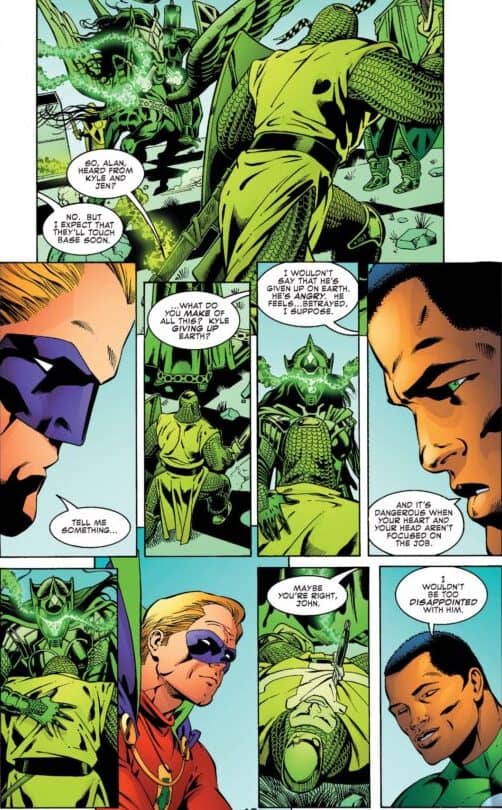***Contains Spoilers***
The latter part of Judd Winick’s run on Green Lantern (Vol. 3, Issues #142-164) is a fascinating mix of high-stakes character drama and cosmic storytelling, wrapping up his time with Kyle Rayner. Across these issues, major arcs like Passing the Torch, Ion, and Brother’s Keeper explore Kyle’s growth as a hero and the weight of wielding the power of the Green Lantern Corps. It’s a run that dabbles in superheroics, morality, and introspection while setting up significant changes for the Green Lantern mythology.
What stood out most for me was the Ion storyline. Watching Kyle become essentially godlike and then willingly relinquish that power underscored what makes him such a compelling character—and in my view, superior to Hal Jordan. The moral strength Kyle displays by stepping away from absolute power, especially when juxtaposed with Hal’s history as Parallax, remains a defining moment for him. Beyond that, Ion serves as a clever pivot point, laying groundwork for the restoration of the Parallax entity and John Stewart’s return to active duty as a Green Lantern, after years of being sidelined due to his injury. John’s recap in these pages felt poignant, adding to the sense that the Green Lantern Corps’ legacy was truly being revitalized.
Winick also tackled challenging topics head-on with Brother’s Keeper. The storyline, which involved a hate crime against a gay character, was bold and impactful for its time, reflecting a willingness to address social issues in superhero comics. Not only did it feel relevant and emotional, but it also provided a plausible way to push Kyle off-world without feeling forced. It’s a testament to Winick’s ability to weave grounded human stories into the fabric of cosmic escapades.
Surprisingly, I found myself enjoying Kyle’s space adventures during this run. Normally, those parts of Green Lantern stories don’t hold my attention, but Winick handled them with enough urgency and emotion to keep me engaged. The stakes felt personal, even when Kyle was light-years away from Earth.

However, this run wasn’t without its shortcomings. While the larger arcs were solid, there were moments when the pacing dragged or felt uneven, particularly when transitioning between Earth-based and space-based storylines. Some of the supporting characters felt underutilized or lacked depth, which was a missed opportunity given the richness of the Green Lantern mythology. And while the cosmic elements were executed well here, they didn’t convert me into a fan of that aspect of the franchise overall.
In the end, Winick’s swan song on Green Lantern is an admirable blend of character work, social commentary, and myth-building. While it has its flaws, the highlights—Kyle’s transformation into Ion, the handling of John Stewart’s legacy, and the resonance of Brother’s Keeper—make it a memorable read. I give this run three stars. It’s something I’d revisit, but it doesn’t quite reach the heights of being a must-read classic.
Feature Image Green Lantern #144 cover art by Dale Eaglesham, Rodney Ramos & T. Horne
Keep NewToComics.com running with a donation or shopping with through our affiliates—your support helps maintain the site and continue guiding new readers into the world of comics!


